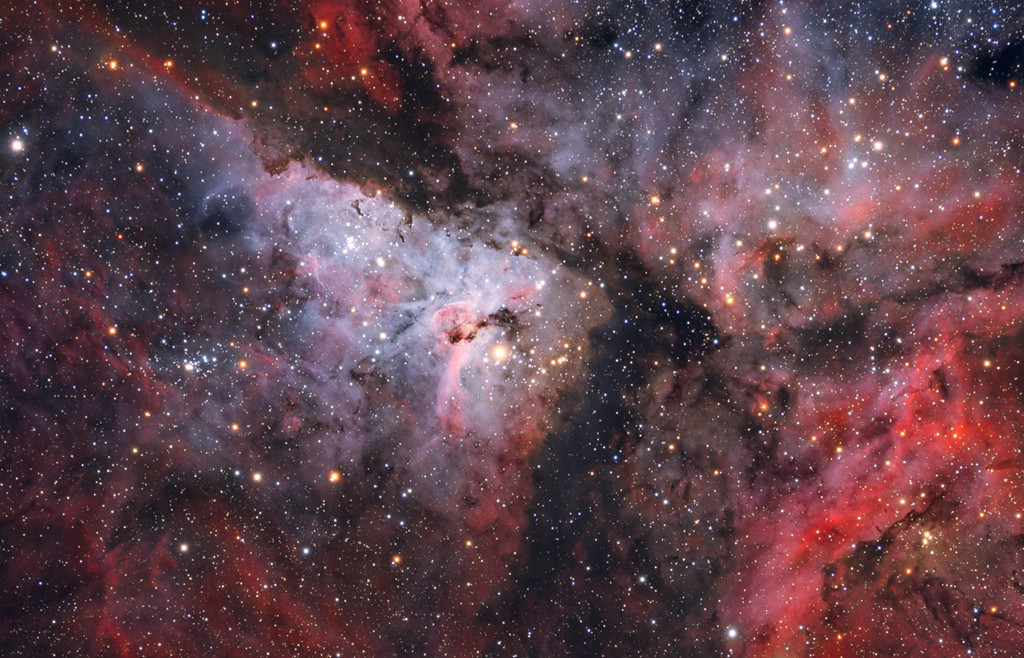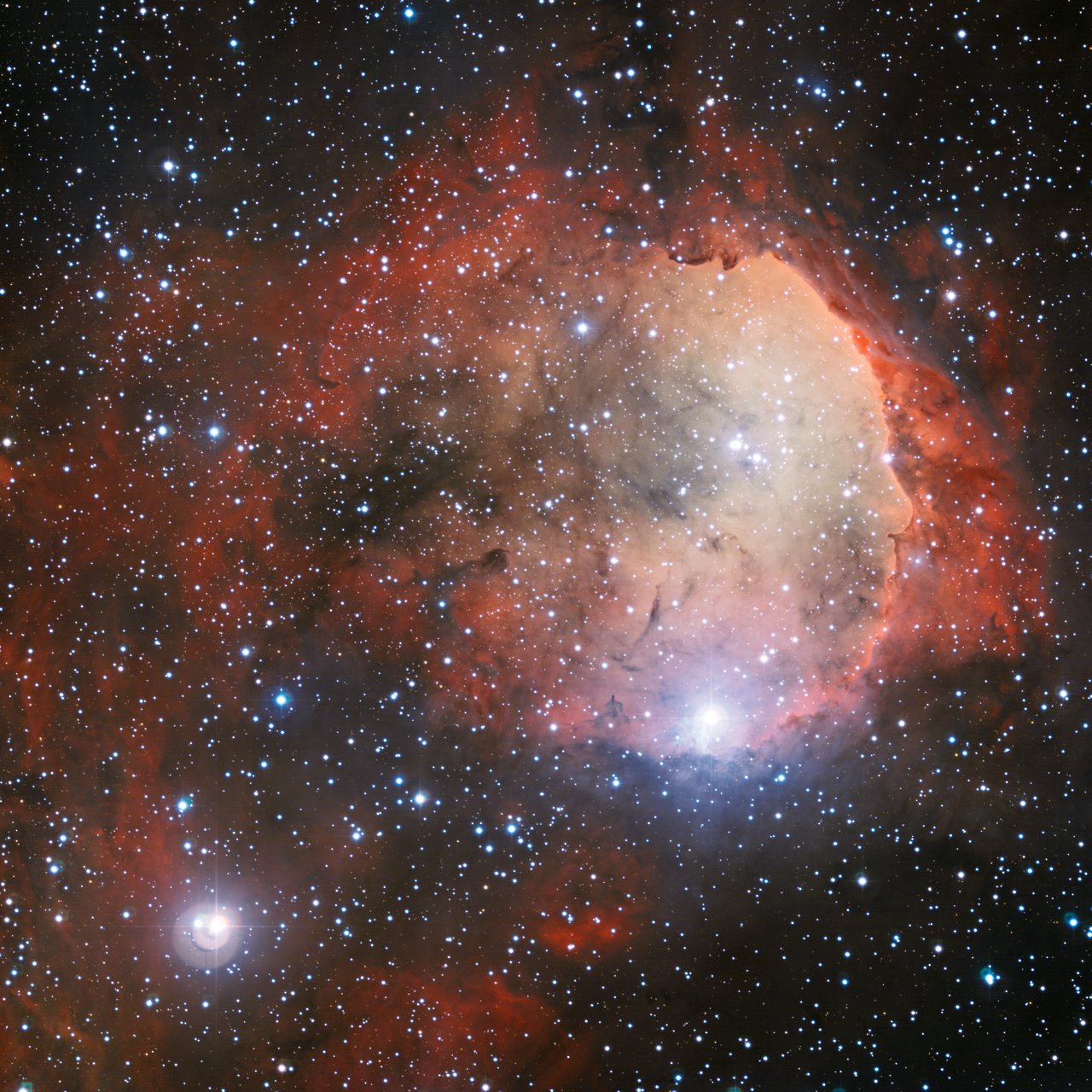As some of you may know, I'm not the greatest fan of the aesthetic qualities of Hubble palette images (even if I do realize that such images can provide important information on the elements found in a nebula - and also they are much easier to acquire with amateur equipment under light-polluted skies than RGB images).
Even so, just for comparison, I'm going to post a few RGB (or mostly RGB) images of the Carina Nebula!

The Hubble palette image at top left is sharply green and orange-red due to the fact that the ubiquitous Hydrogen Alpha is mapped as green, and the pseudo-green of Hα and the red of SII combine to make sharply orange hues.
The ESO image looks strikingly blue. That is probably because an ultraviolet filter has been used for this image (as well as B,V, R, Hα and SII filters). There must be a lot of ultraviolet light in the Carina Nebula, and when UV is mapped as blue, the V-shaped highly ionized part of the Carina Nebula is likely to take on a bluish cast.
The picture by Maicon Germiniani is the one that is by far the most visually appealing to me. I find the the image as beautiful as if it had been a painting by an abstract colorist. Maicon Germiniani describes some technical details about the making of his image
on this page, but as far as I can understand, this is an LRGB image. No Hα filter has been used, and no UV.
Harel Boren's image at bottom right looks almost "all red". Like Maicon Germiniani's image, Harel Boren's picture is, I believe, an LRGB image. But while Maicon Germiniani's image is rich in colors, Harel Boren's is, indeed, almost all red.
I believe that Harel Boren is right. The Carina Nebula is overwhelmingly dominated by hydrogen alpha light, which is indeed very red. But even in a red nebula there are some small variations in hue as well as in brightness.
Finally, at top right in Harel Boren's image, Chilean poet Gabriela Mistral is surveying the skies from her own private nebula, the Gabriela Mistral Nebula or NGC 3324.
Why does the nebula look so yellow in the picture I have posted at left? It does not look yellow at all in Harel Boren's image.
Well, check out
this page. The yellow color is due to the fact that the 660 nm filter, which would normally be shown as red (since light of a wavelength of 660 nm is red), has been mapped as bright yellow in the ESO image.
There you go. Filters, filters. Mapping, mapping. Processing, processing.
Ann
 Clouds of the Carina Nebula
Clouds of the Carina Nebula




